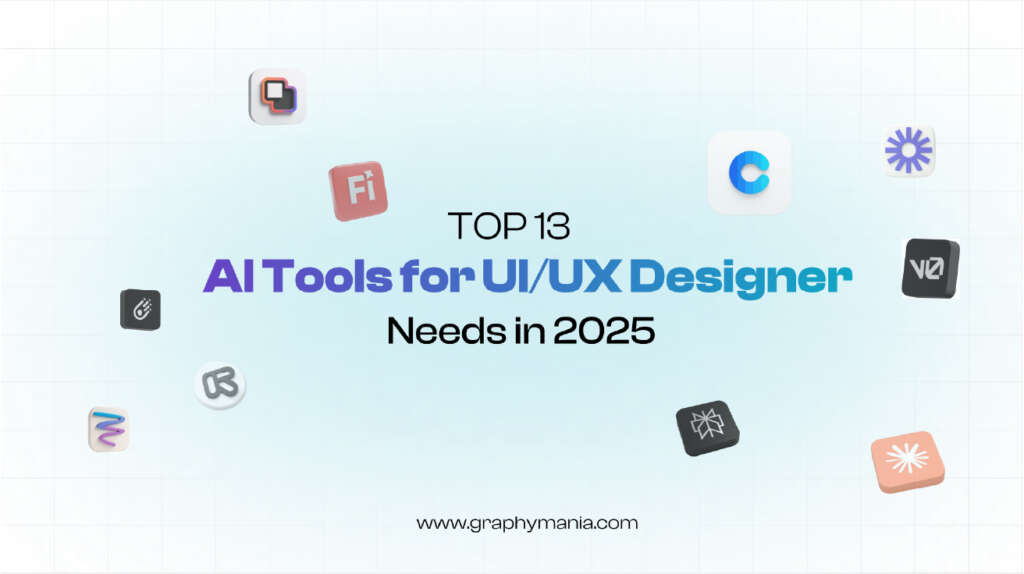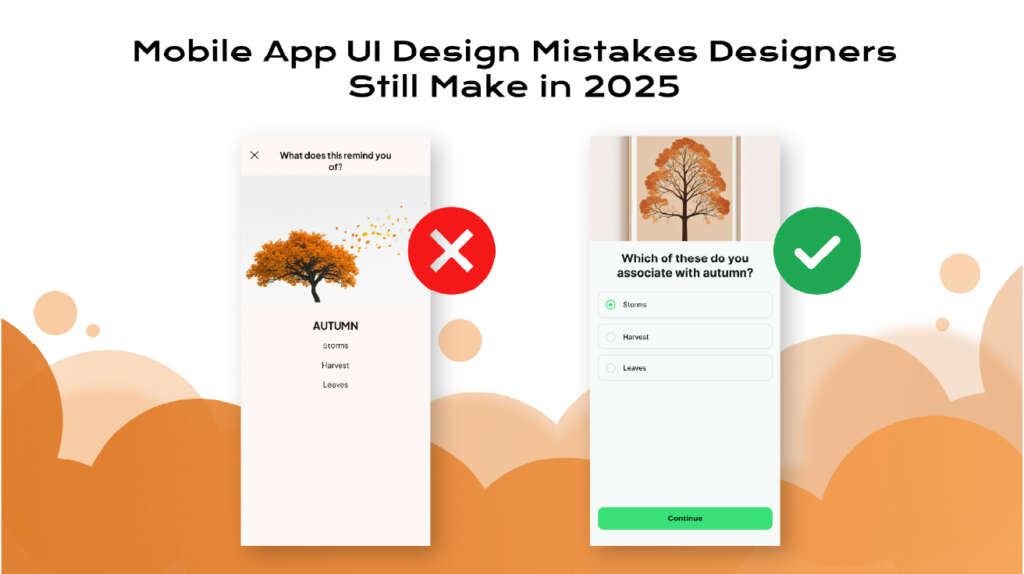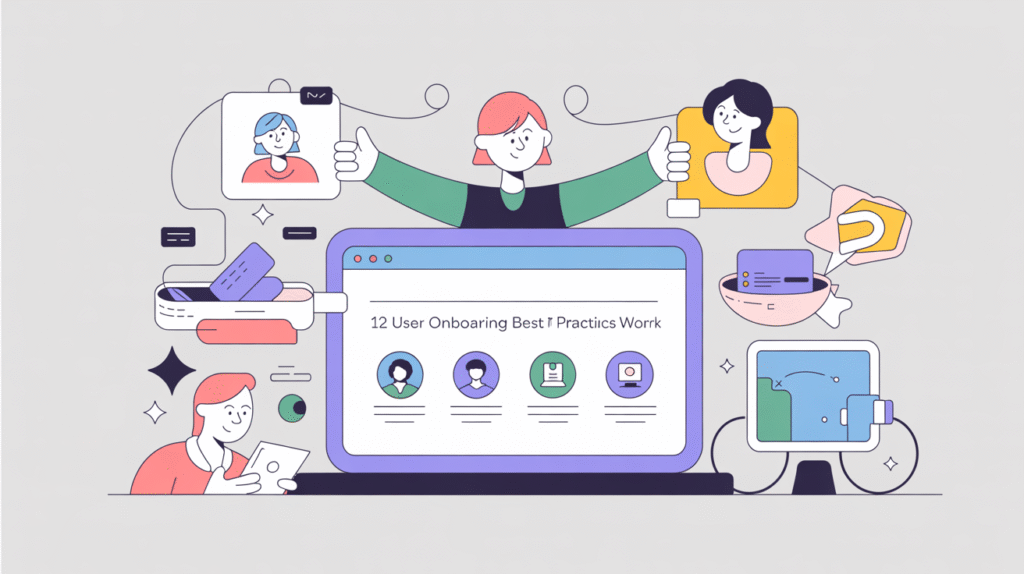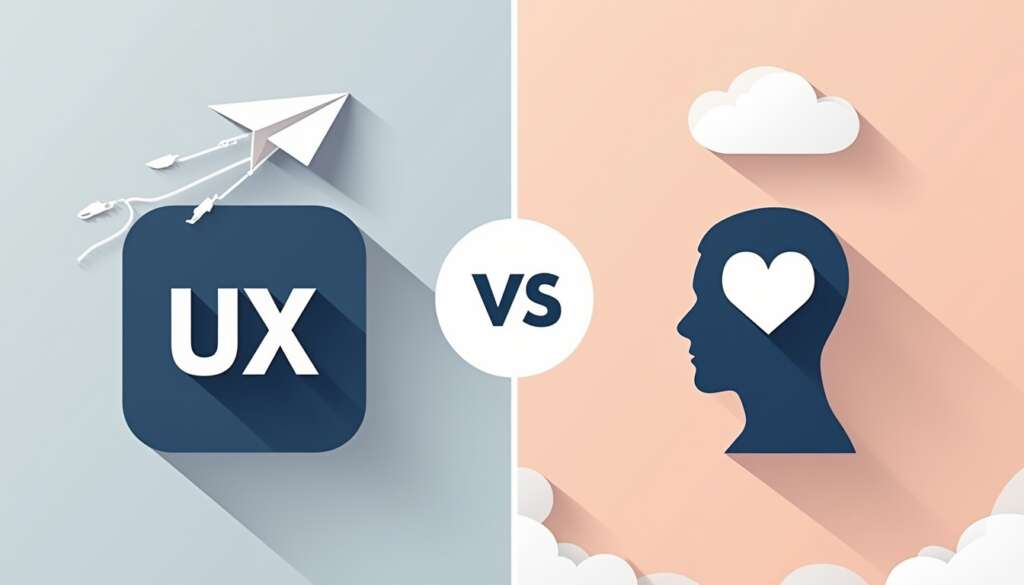In 2025, voice user interface design is no longer futuristic — it’s becoming a business necessity. According to Juniper Research, global voice assistant usage is projected to surpass 8.4 billion devices by 2025, nearly matching the world’s population. For enterprises, this means that employees and customers now expect seamless voice user interface (VUI) experiences within the apps they use daily.
As enterprise systems become more complex, ui ux designers must rethink ux and ui design to create voice-driven interactions that are not only intuitive but also secure, efficient, and scalable. This blog explores the best practices that user experience designers can adopt when building enterprise-ready voice UI solutions.
Why Enterprises Need Voice User Interface Design
Traditional user interface design relies heavily on visual screens and manual input. But in enterprise settings, where speed and multitasking are critical, voice user interface interactions unlock new levels of efficiency.
Key benefits for enterprises include:
- Faster workflows: Employees can perform tasks hands-free.
- Accessibility: Voice helps users with limited mobility or vision.
- Consistency: UI UX design teams can unify system interactions across apps.
- Scalability: Enterprises can extend ux design and ui design standards into voice-first platforms.

Best Practices for Enterprise Voice UI Design
To create effective voice UI for enterprises, interface designers must balance usability, security, and context.
- Prioritize Clarity and Feedback
- Always confirm commands with visual or audio feedback.
- Ensure the system communicates when a task is in progress or complete.
- Design for System Complexity
- Break down complex enterprise workflows into simple voice commands.
- Provide structured menus to prevent confusion.
- Ensure Contextual Awareness
- Adapt voice interactions based on role (manager vs. employee).
- Use system data to anticipate user needs.
- Layer in Security and Privacy
- Use multi-factor authentication (voice + PIN).
- Protect sensitive enterprise data from accidental leaks.
- Blend Voice with Visual UI
- Not every interaction should be voice-only.
- Combine ux interface design with voice ui for hybrid experiences.
Want to explore how voice user interface design can fit into your enterprise ecosystem?
Our UI/UX designers have done it for leading global brands — and we can do it for you.
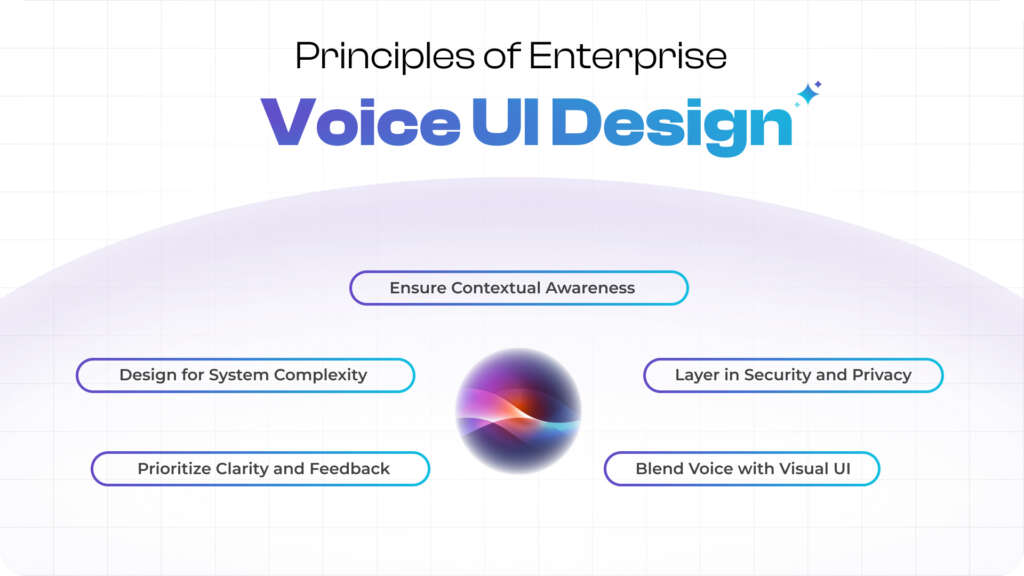
Challenges and Solutions in Voice User Interface Design
Enterprise adoption of voice user interface design faces hurdles — but each has solutions:
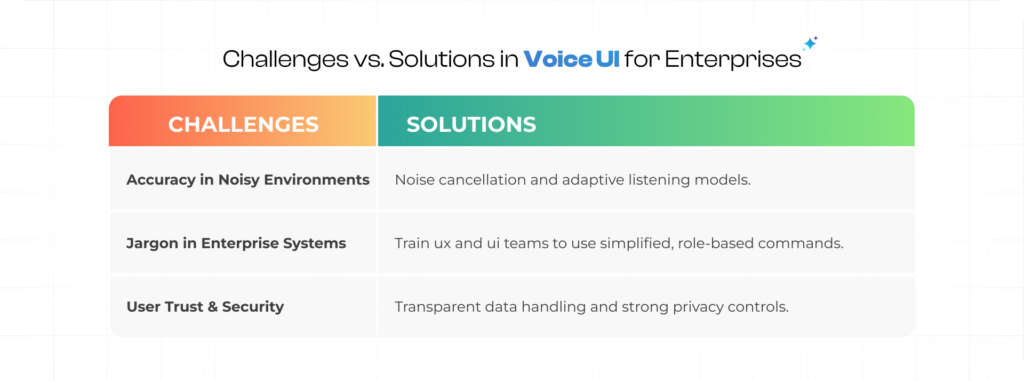
Conclusion
By 2025, voice user interface design is transforming enterprise applications into smarter, more accessible, and more efficient platforms. For enterprises, adopting voice UI is not just about innovation — it’s about enabling employees and customers to work faster, safer, and more effectively.
At Graphymania, our user experience designers and ui ux designers specialize in creating enterprise-grade ux and ui design systems that seamlessly blend voice ui with visual interaction. The future of enterprise apps is voice-enabled, and businesses that embrace it will lead the way.
The future of enterprise applications lies not just in screens, but in seamless conversations. Voice UI bridges the gap between human intent and system intelligence — making technology more natural, accessible, and efficient.
MOHD ARMAN
FAQs
1. What is voice user interface design?
Voice user interface design is the process of creating systems where users interact through voice commands instead of traditional input methods. For enterprises, this means designing efficient, accessible, and secure workflows.
2. How is voice UI different from traditional user interface design?
While traditional ui design focuses on screens, voice ui removes visual dependence, enabling hands-free operation. Enterprises often combine the two for better ux and ui design.
3. Why should enterprises invest in voice user interface?
For productivity, accessibility, and future-proofing. UX designers and UI designers can help companies reduce friction, speed up workflows, and create inclusive applications.
Don’t let your enterprise fall behind.
Start your journey toward intelligent, voice-enabled user experiences.


